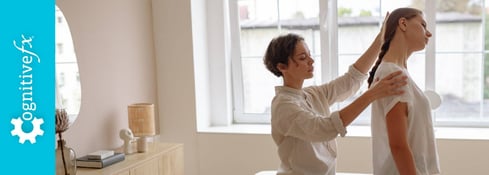We can all agree that nausea is terrible. If it’s a one-time thing because you ate expired yogurt, well, it’s not the end of the world — you’ll be back to normal in a day or two. But nausea that lasts for days? Or comes back every time you exercise? It’s awful.
Even though nausea is such a difficult symptom to deal with, there’s very little information for patients on why it can come after a concussion or what to do about it. Anti-nausea meds are an option, but they’re not a permanent solution if your nausea keeps coming back.
Since we treat hundreds of patients a year for post-concussion syndrome, we’ve seen plenty of nausea cases (and even keep a bucket in our workout room, just in case). So, we’ll do our best to answer commonly asked questions about concussion and nausea, including:
- How long nausea lasts after a concussion
- Why concussions (and especially post-concussion syndrome) cause nausea
- What might be triggering your nausea
- How to get the right treatment
- Coping strategies you can use at home.
Are you struggling with nausea and other symptoms after a concussion? If it’s been a few months and you haven’t gotten better, we can help. 95% of our patients experience statistically verified restoration of brain function. To learn whether we can help you, schedule a consultation.
Note: Any data relating to brain function mentioned in this post is from our first generation fNCI scans. Gen 1 scans compared activation in various regions of the brain with a control database of healthy brains. Our clinic is now rolling out second-generation fNCI which looks both at the activation of individual brain regions and at the connections between brain regions. Results are interpreted and reported differently for Gen 2 than for Gen 1; reports will not look the same if you come into the clinic for treatment.
Can a Concussion Cause Nausea?
Yes, a concussion can cause nausea. Patients can experience short-term nausea associated with acute concussion (mild TBI), or they may experience situational or persistent nausea even after recovering from the initial injury.
It doesn’t matter whether you were injured in a car accident or contact sports; even what you think is a “mild concussion” could cause nausea. Keep in mind that you don’t have to hit your head directly to get a concussion, nor do you have to experience loss of consciousness. If you are unsure if your head trauma amounts to a concussion, read our post on how to know if you’ve had a concussion.
Chronic nausea (nausea that you have all the time) is possible, but rare. Most of the time, patients whose nausea recurs after initial healing from a minor head injury experience it due to certain situations or other symptoms that aggravate it.
To learn more about those other symptoms, you can read our post on the symptoms of a concussion. Concussion symptoms are wide-ranging, and not everyone’s symptom profile looks the same. One person might struggle with memory problems, difficulty concentrating, and blurry vision, while another has sleep disturbances, balance problems, tinnitus, and headaches.
There are many different ways to get nausea post-concussion. We’ll explain the main ones in this section.
Note: Nausea after a concussion is normal. But if you experience persistent vomiting — or other danger signs of severe injury such as slurred speech, confusion, loss of consciousness, seizures, worsening severe headaches, overwhelming drowsiness, or severe balance problems — seek medical attention at your nearest emergency room/emergency department. If you experience a second concussion before recovering from the first, it could result in second impact syndrome (SIS), a life-threatening condition that also constitutes a medical emergency. Avoid any activity which increases your risk of concussion until you’re fully recovered.
Why Do People Get Concussion Nausea?
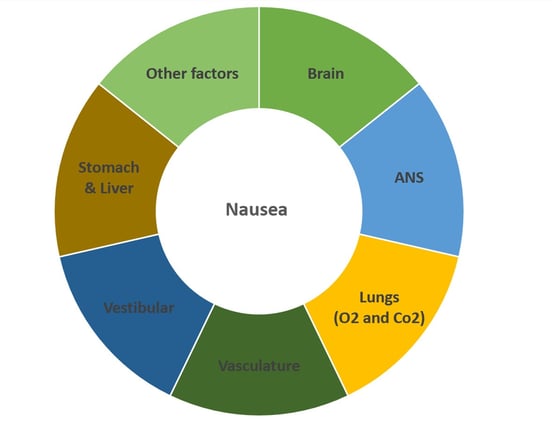
It’s not usually just one system going awry (although it can be). Post-concussion nausea often comes from several causes all working together. Sometimes, a set of post-concussion symptoms will work together and cause a downward spiral of worsening symptoms.
For an easy-to-understand example, consider sleep problems + headaches: The headaches make it harder to sleep, and the lack of sleep fuels the headaches.
When it comes to nausea, post-concussion brain dysfunction and autonomic nervous system (ANS) dysfunction are thought to be the main perpetrators (labeled below as an “underlying cause”). But other systems affected by them (like the digestive system) can be the most immediate “cause” of nausea (labeled below as a “direct cause”). Scientists are continuing to discover the factors involved in post-concussion nausea, so we will do our best here to summarize current knowledge.
Underlying Cause #1: Dysfunctional Brain Regions
Nausea and vomiting immediately after a head injury is a clear sign of concussion, but just because you don’t have them doesn’t mean you don’t have a concussion. If you are vomiting after a head injury, seek medical attention. A health care professional can help you determine if any further action needs to be taken.
During acute concussion (the first few days), there is typically inflammation and microstructural damage in the brain. Your nerves and blood vessels could suffer mild bruising. This damage can interfere with the communication channels your brain is used to using, causing it to route around them and get overloaded easily. The less efficient pathways between brain cells (neurons) and regions can cause a host of severe symptoms, including nausea.
In post-concussion syndrome (PCS, also known as postconcussive syndrome or persistent post-concussion symptoms) patients, those affected communication pathways don’t revert to normal after the brain heals from the concussion. Instead, it keeps using the work-around pathways it was using during recovery. As a result, some brain regions are hypoactive, meaning they don’t do their jobs enough or at all, and some are hyperactive, meaning they take on more than their fair share of the work. It’s not brain damage, per se — you can recover from it — but these dysfunctional regions rarely heal on their own and are responsible for many PCS symptoms.
Think of it like a big thunderstorm in your brain. Heavy rains cause areas of damage to bridges and roads, making them impassable for a time. After the storm, the waters recede, but not all the roads are usable without repairs. But for patients who experience persistent symptoms, it’s like the repair crews never show up. A car could still probably drive through these areas, but dodging pot-holes and downed trees isn’t as efficient as, say, taking a much longer but clean side road. Those roads — analogous to your brain’s pathways for passing nutrients and information to the right places — will stay damaged until they’re given the right treatment.
The changes in your brain from PCS can cause different physical, emotional, and cognitive symptoms, depending on which regions are affected. For example, in some patients, the region of the brain that governs smell processing is affected. As a result, smells that didn’t bother them before suddenly render them nauseated.
These post-concussion signaling problems in your brain are known as neurovascular coupling (NVC) dysfunction.
Underlying Cause #2: Autonomic Nervous System Dysfunction
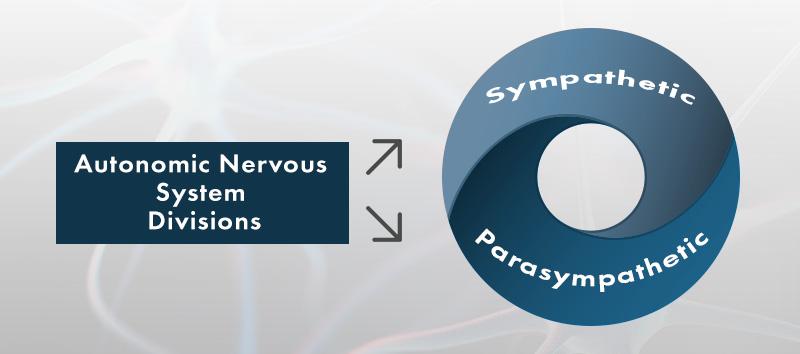
Another system that can be disrupted by concussion is your autonomic nervous system (ANS). The ANS governs all the automatic processes that go on in your body, such as breathing, blood pressure, heartbeat, and even aspects of digestion.
It’s in charge of your fight or flight response, too. In many post-concussion patients, the part of the ANS which controls the fight or flight response (your sympathetic nervous system) is overactive, and the part that helps things calm down (your parasympathetic nervous system) is underactive.
Dysregulation of the ANS can cause problems with blood flow (vasculature), breathing, heart rate, digestion, and many other processes. Many of the “secondary” causes of nausea listed below are tied to the ANS, brain, or both.
Direct Cause #1: Improper Breathing During Exercise
Sometimes, patients report nausea after exercising. Usually, it shows up during exercise or sometimes even light physical activity, although a few patients have nausea one or two hours after.
So why does it happen? ANS dysregulation can disrupt healthy breathing patterns. When these patients try to do cardio exercise, they don’t breathe deeply enough. As a result, carbon dioxide builds up in their lungs, increasing blood acidity (which, incidentally, can also affect how your blood vessels constrict and dilate).
High blood acidity makes your body think it’s being poisoned. That results in a nausea response, even though breathing problems aren’t a poison you can just eject.
Direct Cause #2: Changes in Blood Flow and Blood Pressure
Control of blood flow and/or blood pressure for the brain can be dysregulated as well, often via the ANS dysregulation described above, but also via disruption of something called cerebral autoregulation. Cerebral autoregulation is the process that controls the blood pressure in your head. If it’s disrupted, you can end up with too much or too little blood in your brain.
And having too much or too little blood in your brain will cause problems like cognitive impairment and nausea.
Direct Cause #3: Vestibular or Vision Problems

Your vestibular system, primarily located in the inner ear, is involved in balance. It works along with your brain and your eyes to determine where your body exists in 3D space relative to everything around it. It also communicates with the brain and the ANS to dictate positional blood flow dynamics (i.e. when you bend down to get something).
If these interconnected systems don’t agree, it confuses the body, resulting in symptoms such as dizziness and nausea.
A classic example would be patients who can tolerate driving if they’re the driver, but not if they’re the passenger. If you get nausea or dizziness unless you’re driving, that’s usually a sign that your vestibular system isn’t working perfectly. If you’re just fine being a passenger but can’t tolerate driving, then your vision is likely affected.
Further reading: Vestibular therapy for post-concussion symptoms
Direct Cause #4: Stomach and Liver
Sometimes, patients experience changes to the digestion process as a result of significant ANS dysregulation. The part of the ANS responsible for the “rest and digest” process (the parasympathetic nervous system) can become depressed in relation to the “fight or flight” side (sympathetic). One effect of this, which is linked to PCS headaches, is increased blood in the head and, consequently, decreased blood in the stomach and liver.
As a result, your meals might not move through your GI tract at the right speed, resulting in symptoms like constipation or diarrhea. Filtering of the blood by the liver could also be affected, leading to less detoxification and decreased production of chemicals that help digest food. We also suspect that the influence of the ANS on the GI tract could result in new food sensitivities.
If you think you’ve developed a food sensitivity since your concussion, work with a nutritionist or another specialist to figure out which foods are causing your nausea and eliminate them from your diet.
Further reading: Stomach problems after concussion
Other Factors
This post isn’t a comprehensive list. There are still other issues that could influence your nausea.
For example, some people ask if stress can make you nauseated. The answer is yes, under certain conditions. If your ANS is already dysregulated, stress can increase the severity of your resulting symptoms by aggravating it further. Stress is often more of a contributing factor to an existing or underlying issue than a direct cause, however.
What’s Causing Your Nausea? A Brief Look at Symptom Combinations

Often, nausea is not an isolated symptom. Here are some of the most common combinations and what might be causing them.
Note: Just keep in mind that this list is not a replacement for medical advice from visiting a health care provider with experience in concussion and post-concussion syndrome diagnosis.
Concussion Nausea After Eating
If you experience post-concussion nausea after eating, it’s likely the result of your autonomic nervous system affecting your digestive system.
An upset autonomic nervous system can result in gut inflammation, so you may experience nausea or other symptoms after eating certain foods (especially if you are developing new food sensitivities).
Try to include antioxidants in your diet to help calm things down a bit. It won’t fix the source of the problem, but it might mitigate your symptoms.
Concussion Nausea and Dizziness
When nausea and dizziness are both present that’s a strong clue that your vestibular system and/or vision may have been affected by the head injury. If these symptoms persist, it’s important to seek diagnosis and treatment as they are unlikely to resolve on their own.
Concussion Nausea and Headache
These specific symptoms are often situation dependent. For example, a migraine headache could bring on nausea simply because you’re in so much pain.
Or, if the headache and nausea come on after you attempt to exercise, it could be a problem with your breathing and/or vascular issues (caused by ANS dysregulation).

Post-Concussion Nausea, Headache, and Fatigue
Since these are all common symptoms of concussion and post-concussion syndrome, they could arise from any of the situations described in the previous section. All of these symptoms are difficult to deal with and can make you want to isolate yourself.
Whenever possible, do your best to spend time with understanding family members and friends who support you, and seek treatment so you don’t have to live with those symptoms forever.
If you’re struggling with post-concussion nausea and other symptoms, we can help. Our patients’ average improvement is 75%. To learn whether we can help you, schedule a consultation.
How Long Does Nausea Last After a Concussion?
Concussion recovery time is 1-2 weeks for many patients. Likewise, nausea that immediately follows a concussion (known as acute concussion) can last up to two weeks. Longer-lasting nausea should be a cause for concern.
Patients suffering from post-concussion syndrome — that is, symptoms following a concussion that last for over three months — may experience nausea indefinitely, although it is most often associated with certain triggers rather than being present all the time.
If you’ve been experiencing nausea and other common signs of concussion for several months or more, you may have post-concussion syndrome. In the following section, we’ll explain what you need to do in order to get a diagnosis, keep your nausea under control, and undergo active rehabilitation.
Post-Concussion Syndrome Nausea Treatment Options
We’ve written extensively on the diagnosis and treatment of post-concussion syndrome, so we’ll mainly use this opportunity to direct you to the right resources. But we’ll also spend some time specifically discussing anti-nausea medication, what active rehabilitation looks like, and additional strategies you can try to limit nausea at home.
Getting a Diagnosis
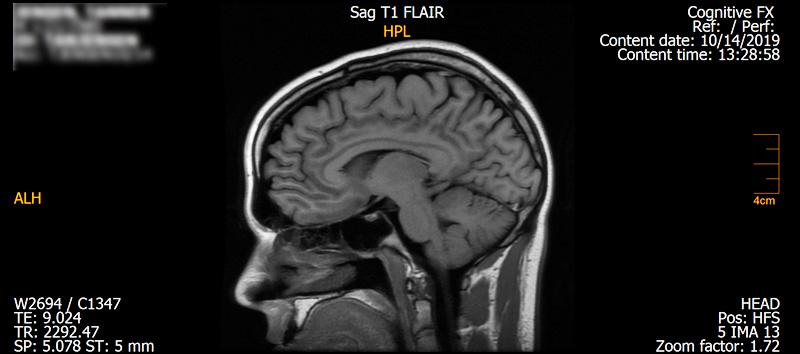
If you’ve been dealing with the symptoms of PCS for a while, you probably realize how difficult it can be to get a straightforward diagnosis. We’ve heard that from a lot of our patients (such as Myrthe, who was told by various doctors either that she was imagining things or that she would never recover from her skiing head injury).
It doesn’t help that there are so few good imaging techniques for concussion diagnosis. If you get a structural MRI or CT scan, that can confirm you haven’t sustained a severe traumatic brain injury (TBI), but rarely will it confirm the presence of a mild traumatic brain injury (mTBI).
Part of diagnosing post-concussion syndrome is the medical history review and post-concussion symptom scale (PCSS), which tells us which symptoms you’re experiencing besides nausea. Many PCS patients experience a range of symptoms. Some common symptoms of post-concussion syndrome include brain fog, dizziness, short-term memory loss, vision problems (such as blurred vision or double vision), headaches, light or noise sensitivity, emotional symptoms (sometimes identified by patients as ‘personality changes’), exercise intolerance, neck pain, and more.
In addition, we assess functional vision, breathing mechanics, balance and vestibular health, hand-eye coordination, and cognitive ability.
But the most important part of your evaluation at Cognitive FX is functional neurocognitive imaging (fNCI), which is a type of functional MRI. This is the only known method for demonstrating not only that an injury has occurred, but which brain regions have been affected by the injury. We use the results of that scan to tailor your treatment plan to what your brain needs.
You can read more about how an fNCI differs from a structural MRI and why it works here.
Overall, diagnosis of post-concussion syndrome is often a complex process that can involve ruling out other medical conditions, evaluating symptom history, running imaging tests, and conducting an in-person physical and neuropsychological evaluation. If you’d like us to weigh in on your situation and symptoms, schedule a consultation.
Do you know how to recognize pediatric concussion signs? Young children and adolescents can’t always express what they’re experiencing. And sports-related concussions are just one way for children to hurt themselves; they might not tell you (or be able to tell you) that they’ve injured themselves. Click here to read our article on how to recognize post-concussion syndrome in children.
Anti-Nausea Medication After Concussion
There aren’t many medication options for patients who suffer from nausea. The two we see most commonly are Dramamine tablets and Scopolamine patches.
It’s critical to avoid overusing Dramamine, since it can increase your fatigue to potentially dangerous levels, especially if fatigue is one of your concurrent symptoms. Nausea meds were never designed with long-term use in mind. If you’ve been relying on them, work with your doctor or another concussion specialist to wean off of them.
Getting treatment for the root cause of your nausea will be significantly better for your health than relying on medications as an indefinite fix. It’s common for patients to accrue multiple medications — antidepressants, blood pressure meds, headache prescriptions, and more — after appointments with their neurology doctors, general physicians, and others involved in their care. But post-concussion syndrome patients are more at-risk for side effects and often have adverse reactions to those medications.
Further reading: What a neurologist can and can’t do for persistent concussion symptoms and What you need to know about post-concussion medication
Active Rehabilitation
The best way to conquer post-concussion nausea is active rehabilitation (not, as you may have been told, getting plenty of rest in a dark room, then returning to normal activities). We know that can sound insurmountable, especially if your nausea is worsened by physical activity. But a combination of physical and mental exercises are the key to post-concussion recovery.
At Cognitive FX, we use a specific treatment regimen designed to promote neuroplasticity, which is your brain’s ability to change and to heal itself. Therapy is targeted to address the problem areas identified during an fNCI scan. All patients undergo a scan before and after treatment to know which brain regions need improvement and to see how much those areas have improved after a week of intense therapy.
The therapy we provide follows a repeating cycle of preparation, activation, and recovery.
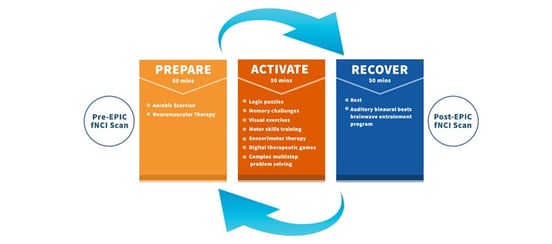
Cardiovascular exercise improves blood flow, which brings oxygen and other nutrients to the brain, thereby preparing the brain for cognitive work. Once the brain is ready, patients do multidisciplinary exercises that challenge their memory, motor skills, executive thinking, and more.
Treatment includes several types of therapy, including but not limited to:
Some other examples of therapy include sensorimotor therapy, dynavision, and occupational therapy. Built into the day is a period of time for recovery and relaxation so your brain can make progress throughout the week.
Further reading: Recovering from post-concussion syndrome and One patient’s journey through PCS diagnosis and treatment
Additional Strategies for Post-Concussion Nausea

None of these strategies are a replacement for post-concussion treatment, but they may help:
- If certain smells trigger your nausea, sniff peppermint oil (or something similarly strong and soothing). While it’s not always possible, do your best to stay away from smells you know will make you feel ill.
- Find a local specialist who can diagnose functional vision and vestibular problems. These issues can be diagnosed and treated separately (and often take more time to recover than one week). Even if you’re looking into treatment at Cognitive FX or another concussion clinic, you can jump start recovery in these areas while you wait for an opening.
For vision problems, we recommend visiting Dr. Devin Duval if you’re in Provo, Utah.
- If exercise brings on nausea, look for a therapist who can teach you controlled hyperventilation and/or deep breathing strategies. These strategies will help get the carbon dioxide out of your lungs and postpone or resolve the nausea that results from a buildup. Read more about exercising safely after a concussion here.
- Don’t induce vomiting. Vomiting is our body’s response to a lot of problems, but in this case, it won’t resolve the difficulties your body is facing. If you do vomit, get a good electrolyte mix that includes sodium, magnesium, and potassium. Electrolyte depletion is a serious risk factor for heart problems. You can also talk to your doctor about a mouthwash to protect your teeth from stomach acid.
- Only use herbal remedies under a doctor’s supervision. Unfortunately, herbal remedies could make the problems you’re facing worse. It’s important to find something that’s safe and that works for you.
- If driving makes your symptoms worse, don’t do it. We know this is a hard one, but it’s not worth risking your safety and the well-being of others. Tap into your support network or take public transportation if you can.
Finally, it’s important to remember one of the secondary effects of living with nausea: nausea can make you want to isolate yourself from the rest of the world. But isolation puts you at further risk of emotional symptoms and can leave you without a good support network when you need it most.
Many patients report emotional symptoms such as depression and anxiety associated with their injury. Get outdoors if you’re able to tolerate it with your current symptoms — doing so is good for your overall health and may help alleviate the severity of emotional symptoms. And, as difficult as it may be, try to keep up your relationships. Enlisting the help of trusted friends and family can help you on your journey to recovery.
Are you struggling with nausea and other symptoms after a concussion? If it’s been a few months and you haven’t gotten better, we can help. 95% of our patients experience statistically verified restoration of brain function. To learn whether we can help you, schedule a consultation.

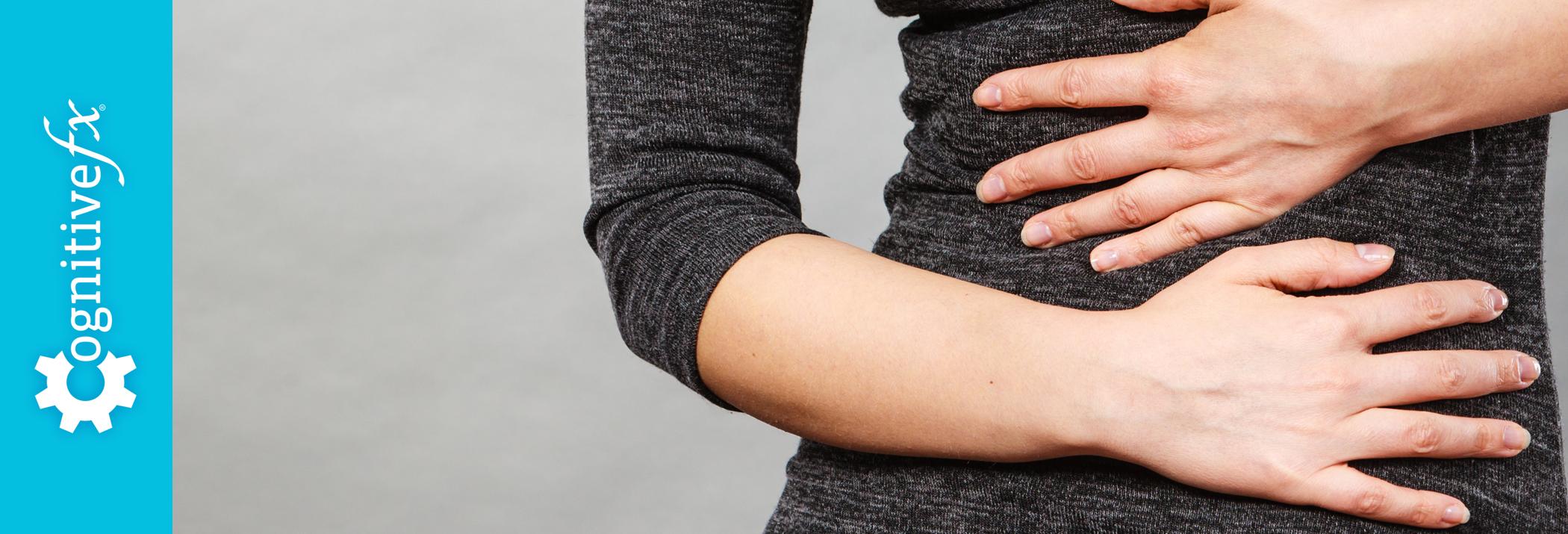














.png?height=175&name=image2%20(5).png)


